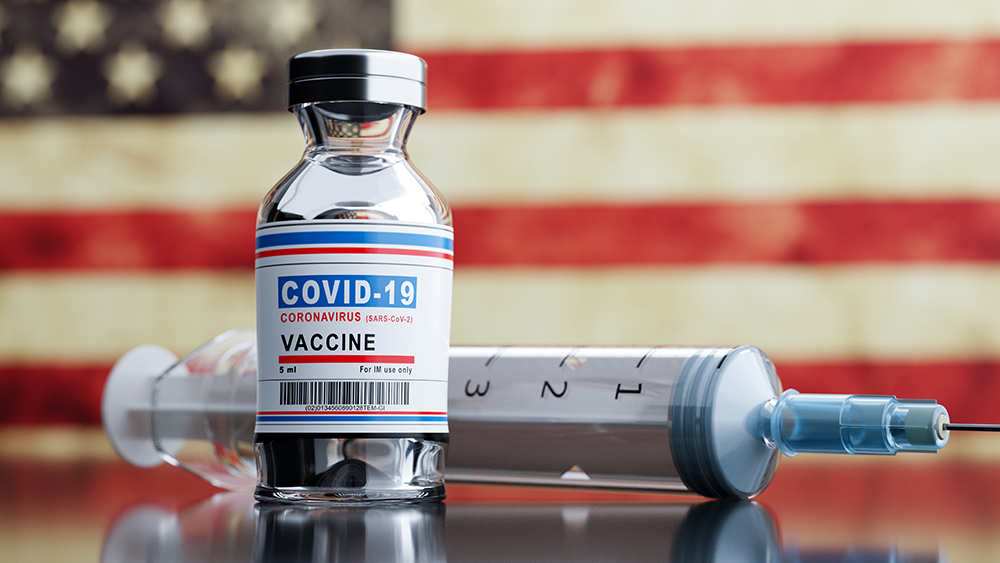Omicron outbreaks, lockdowns continue to affect US supply chain, prices of goods
02/01/2022 / By Roy Green

Omicron outbreaks are waning, but their impact on the U.S. supply chain remains jarring.
The growing shipping congestion in major U.S. and Chinese ports, along with the shortage of truck drivers, is leaving Americans waiting for their goods for a longer time and with higher price tags.
This was one of the key issues Brannon Howse tackled during the January 27 episode of “World View Report.” According to Howse, there’s no immediate relief for the supply chain bottlenecks as the omicron variant continues to stifle global production and China sticks to its “zero-COVID” policy.
The truth is, economists predict that supply chain bottlenecks will be around until at least the second half of this year. Federal Reserve Chairman Jerome Powell even cautioned during a press conference that it might be until 2023 before the supply chains return to their pre-pandemic norm.
True to form, China was quick to act.
Following a new wave of Wuhan coronavirus (COVID-19) outbreaks in the country, Chinese officials launched massive lockdowns and mass testing that forced major manufacturers to close their plants and factories. As a result, labor shortages occurred and the blockages at ports ensued. (Related: Supply chain backlogs might never let up.)
Bloomberg reported that after the COVID-19 outbreak in the Chinese port city of Ningbo, shipping firms ordered their cargo vessels to turn to Shanghai to avoid delays.
American, European ports blocked and backlogged
Consequently, American and European ports that are already clogged got blocked and backlogged.
Visible proofs are in Los Angeles and Long Beach, two of the busiest ports in the U.S., through which about 40 percent of shipping containers enter the country.
Marine Traffic, an online tracking website, located 198 ships waiting outside the two ports on January 13, with another 162 about to dock. On January 30, it found 111 ships waiting outside with 76 about to dock in the Los Angeles port alone.
Southern California is “the epicenter for imports from Asia,” and therefore, any backlogs in these ports have a “domino effect” on major U.S. ports, Mario Cordero, executive director at the Port of Long Beach, told the Epoch Times.
Almost two years since the pandemic was declared, U.S. companies are still scrambling to produce enough to meet the current demand and to refill the depleted inventory shelves.
The demand boom coupled with supply shortages in 2021 has fueled an inflation rate of seven percent, the highest since June 1982.
It also led to the ditching of the “just-in-time” inventory model in favor of building up supply to buffer stocks as many businesses got saddled by the late arrival of orders.
Of course, the erratic inventory flow cascades to the customers, who apart from the long waiting time have to pay 30 percent to 100 percent over previous prices.
As the outbreaks become contained and the supply chain gets fixed, experts are predicting an economic rebound this year. In its latest economic projections, the Federal Reserve sees inflation to retreat to 2.6 percent in 2022 and 2.3 percent in 2023.
Just like the shipping transporters, the American Trucking Association is sounding optimistic. “After falling 6.8 percent in 2020, freight volumes have surged in 2021 – and we will see continued growth in freight demand across all modes for the foreseeable future,” it stated.
Unless nature intervenes, like the snow and ice storm in the mid-Atlantic that brought traffic to a standstill along Interstate 95.
There’s also the manpower to worry about as an aging population, restrictive immigration policies and a declining birth rate have left the labor market short of workers needed to do all the work.
For now, however, the focus must be on the supply chain. Once it flows fluidly, the economy will gradually return to its normal course.
More related stories
Global supply chain crisis expected to last another TWO YEARS.
Small businesses suffering due to supply chain crisis.
SHTF tips: How to survive a long-term supply chain crisis.
Watch the January 27 episode of the “World View Report” with Brannon Howse.
This video is from the BrighteonTV channel on Brighteon.com.
Sources include:
Submit a correction >>
Tagged Under:
bubble, chaos, Collapse, economy, grocery, infections, inflation rate, Long Beach, Los Angeles, omicron, outbreak, panic, products, Shanghai, supply chain, supply chain crisis, supply shortages, US ports
This article may contain statements that reflect the opinion of the author
RECENT NEWS & ARTICLES
Pandemic.News is a fact-based public education website published by Pandemic News Features, LLC.
All content copyright © 2018 by Pandemic News Features, LLC.
Contact Us with Tips or Corrections
All trademarks, registered trademarks and servicemarks mentioned on this site are the property of their respective owners.





















